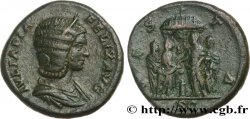Live auction - brm_411378 - SEPTIMIUS SEVERUS, CARACALLA and GETA Denier
You must signin and be an approved bidder to bid, LOGIN TO BID. Accounts are subject to approval and the approval process takes place within 48 hours. Do not wait until the day a sale closes to register. Clicking on "BID" constitutes acceptance of the terms of use of cgb.fr private live auctions.
Bids must be placed in whole Euro amounts only. The sale will start closing at the time stated on the item description; any bids received at the site after the closing time will not be executed. Transmission times may vary and bids could be rejected if you wait until the last second. For further information check the Live auction FAQ
All winning bids are subject to a 18% buyer’s fee.
All winning bids are subject to a 18% buyer’s fee.
| Estimate : | 1 900 € |
| Price : | no bid |
| Maximum bid : | no bid |
| End of the sale : | 13 December 2016 14:39:25 |
Type : Denier
Date: émission dynastique
Date: 201
Mint name / Town : Roma
Metal : silver
Millesimal fineness : 550 ‰
Diameter : 19 mm
Orientation dies : 1 h.
Weight : 2,99 g.
Rarity : R3
Coments on the condition:
Exemplaire sur un flan ovale bien centré au droit avec le grènetis au droit, un peu court au revers sur la légende. Belle tête de Septime Sévère. Revers de toute beauté avec de magnifiques têtes de Caracalla et de Géta. Patine de collection ancienne avec des reflets dorés. Conserve une partie de son brillant de frappe et de son coupant d’origine
Catalogue references :
Predigree :
Cet exemplaire provient de la vente Lanz (Münich) 146, n° 492
Obverse
Obverse legend : SEVERVS - PIVS AVG.
Obverse description : Tête laurée de Septime Sévère à droite (O*).
Obverse translation : ”Severus Pius Augustus”, (Sévère pieux auguste).
Reverse
Reverse legend : [AETE]RNIT IMPERI.
Reverse description : Têtes affrontées de Caracalla lauré à gauche tourné à droite et de Géta nu à droite tourné à gauche.
Reverse translation : “Æternitas Imperi”, (L’Éternité de l’empire).
Commentary
Poids léger. De la plus grande rareté. En 1880, dans l’ouvrage d’Henry Cohen, Rollin et Feuardent cotaient ce denier 60 francs or soit le prix d’un aureus.








 Report a mistake
Report a mistake Print the page
Print the page Share my selection
Share my selection Ask a question
Ask a question Consign / sell
Consign / sell









